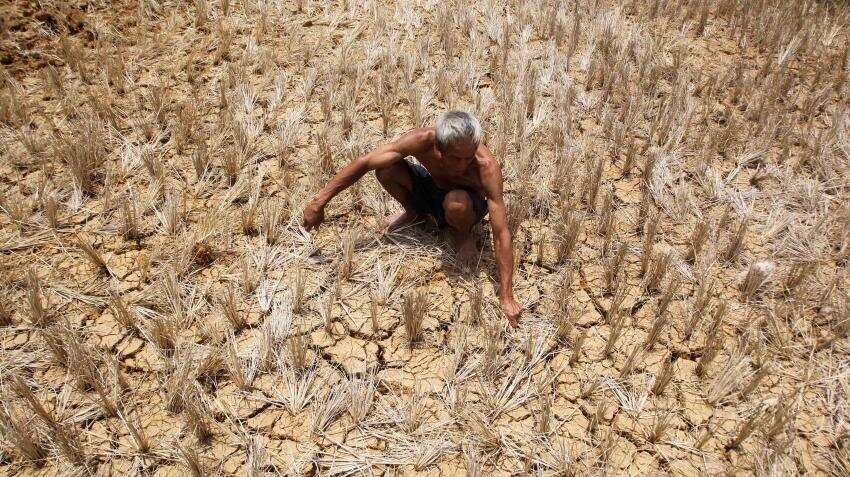Is farm loan waiver impact on Indian economy overestimated?
Analysts and industry experts believe that it is the Non-Banking Financial Companies (NBFCs) and Micro Finance Institutions (MFIs) that are to take a greater hit with these farm loan waivers. A study estimated that NPA amount for cooperative credit system alone is at Rs 40,000 crore.

KEY HIGHLIGHTS:
- Farm loan waivers are unlikely to hit the economy as hard as pointed out
- Farmers have no incentive to default of their farm loans
- Banks only have one-eight of total agricultural loans in India
Total Non-Performing Assets (NPAs) in the Indian banking system related to the agriculture sector are expected to be at Rs 60,000 crore at the end of March 2017 as against Rs 53,000 crore in the same month of last year.
Analysts and industry experts believe that it is the Non-Banking Financial Companies (NBFCs) and Micro Finance Institutions (MFIs) that are to take a greater hit with these farm loan waivers. A study estimated that NPA amount for cooperative credit system alone is at Rs 40,000 crore.
Sujan Hajra, Chief Economist, Anand Rathi, said, "Total spending under the farm-debt waiver is likely to be Rs 65,000 crore if all states and Union territories of the country adopt such measures. This is a vast amount. It can increase the consolidated fiscal deficit of state governments by 13%, or 0.4% of GDP."
States like Uttar Pradesh and Maharashtra have already announced farm loan waivers with calls for such moves in states like Madhya Pradesh, Tamil Nadu and Karnataka already reaching a high pitch.
ALSO READ: Who gets impacted by these farm loan waivers? Banks, NBFCs or MFIs
India's largest Bank -- State Bank of India's chairperson Arundhati Bhattacharya has already pointed out the moral hazard of waiving off farm loans. According to Bhattacharya, waiving off farm loans creates a culture of non-payments in the future.
In 2008, under the Agricultural Debt Waiver and Debt Relief Scheme (ADWDRS), India initiated world's largest state-sponsored loan-relief schemes, Hajra said.
He added, "There is little evidence that the farmers' loan waiver in 2008 created a moral hazardous problem by inducing non-defaulters to renege on their farm-loan repayments."
At the end of March 2008, outstanding direct institutional credit to agricultural sector was Rs 3 lakh crore and under ADWDRS, Rs 53,200 crore worth of farm loans were waived off or given relief, accounting for 17.4% of outstanding agricultural loans.
"If moral hazard were really a major issue, a significant part of the agricultural loans untouched by ADWDRS would have turned delinquent. Yet, that was not the case," Hajra said.
As a matter of fact, banks' overall asset quality improved till 2011. He said, "Both the level and build-up of NPA, post-2011, has been most marked in industry, followed by services. Agriculture has done much better than these two segments on both counts. The only segment that did better than agriculture in terms of asset quality is retail lending."
Hajra further said, "In terms of contribution to overall bank NPA, industry accounts for two-thirds and services nearly 20%. The contribution of agriculture and retail lending account for nearly 10% and 5%, respectively, of overall NPA."
ALSO READ: Farm loan waivers may give sleepless nights to banks with tractor loans
Moreover, with one-eight of loans for farmers coming from banks, they have no incentive to default on bank loans. "With the prospect of very high interest rates on future borrowing, famers are unlikely to wilfully default on bank loans. Interestingly, non-bank financial institutions generally charge much higher interest rates on agro loans. Consequently, the probability of default on such loans is much higher than for bank loans," he said.
Hajra said, "Yet, it is likely that not all state governments would go in for farm loan waivers, at least simultaneously."
"Moreover, as in the case of ADWDRS, state governments which opt for such measures are unlikely to remit to banks the total amount in one go. Consequently, at worst, the total impact of loan waivers on state finances is unlikely to be more than Rs 20,000 crore or 0.13% of GDP in the current year," he said.
Get Latest Business News, Stock Market Updates and Videos; Check your tax outgo through Income Tax Calculator and save money through our Personal Finance coverage. Check Business Breaking News Live on Zee Business Twitter and Facebook. Subscribe on YouTube.
RECOMMENDED STORIES

Looking for short term investment ideas? Analysts suggest buying these 2 stocks for potential gain; check targets

Small SIP, Big Impact: Rs 1,111 monthly SIP for 40 years, Rs 11,111 for 20 years or Rs 22,222 for 10 years, which do you think works best?
10:15 AM IST










 Kisan Credit Card Alert! Benefits to be available only through KCC after this deadline
Kisan Credit Card Alert! Benefits to be available only through KCC after this deadline Rajasthan govt waives farm loans of up to Rs 2 lakh
Rajasthan govt waives farm loans of up to Rs 2 lakh Maharashtra govt to disburse crop credit through PSUs in 16 districts
Maharashtra govt to disburse crop credit through PSUs in 16 districts Farm loan write-offs win votes in India, but may hurt economy
Farm loan write-offs win votes in India, but may hurt economy Uttar Pradesh waives farm loans, to shut some illegal abattoirs
Uttar Pradesh waives farm loans, to shut some illegal abattoirs